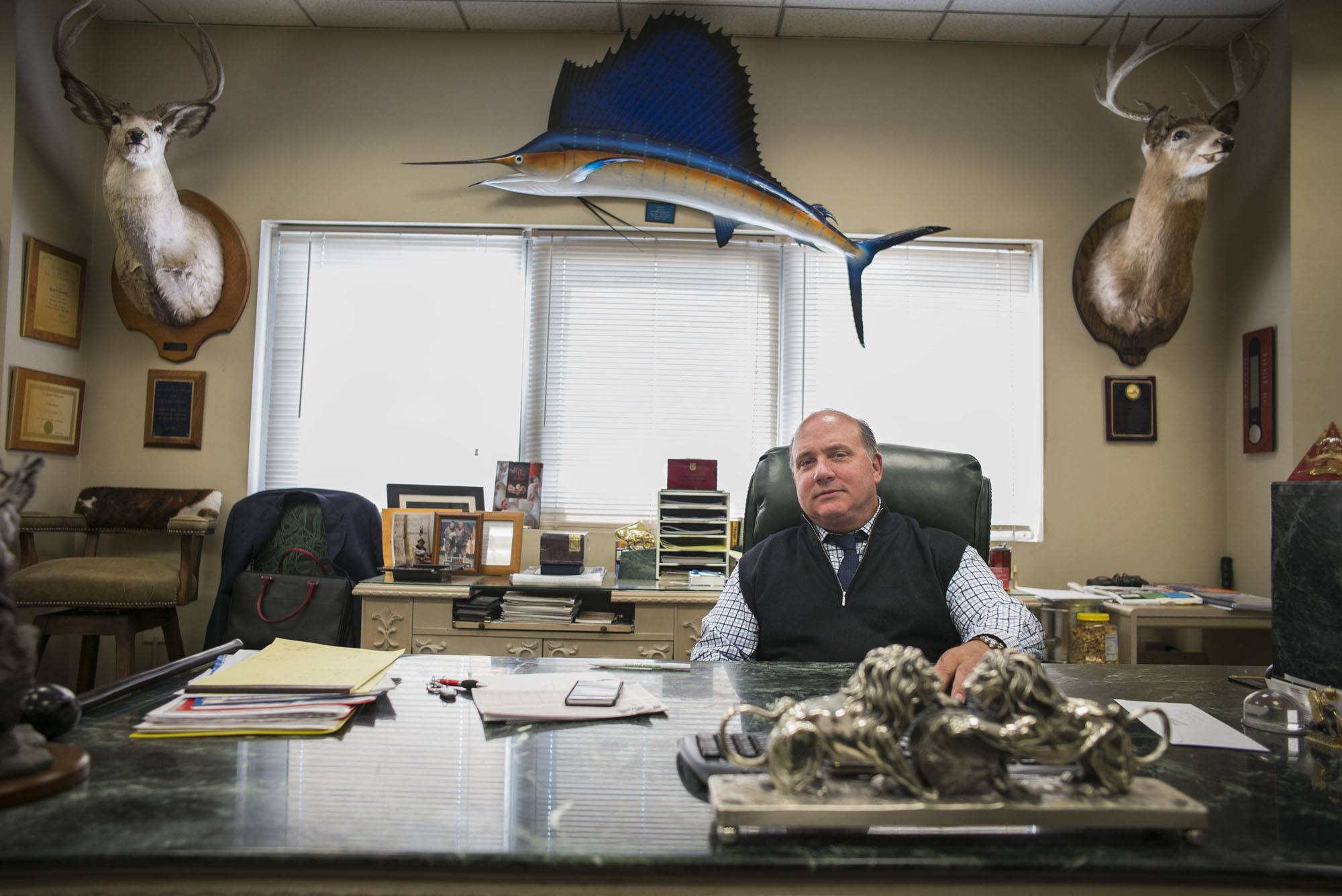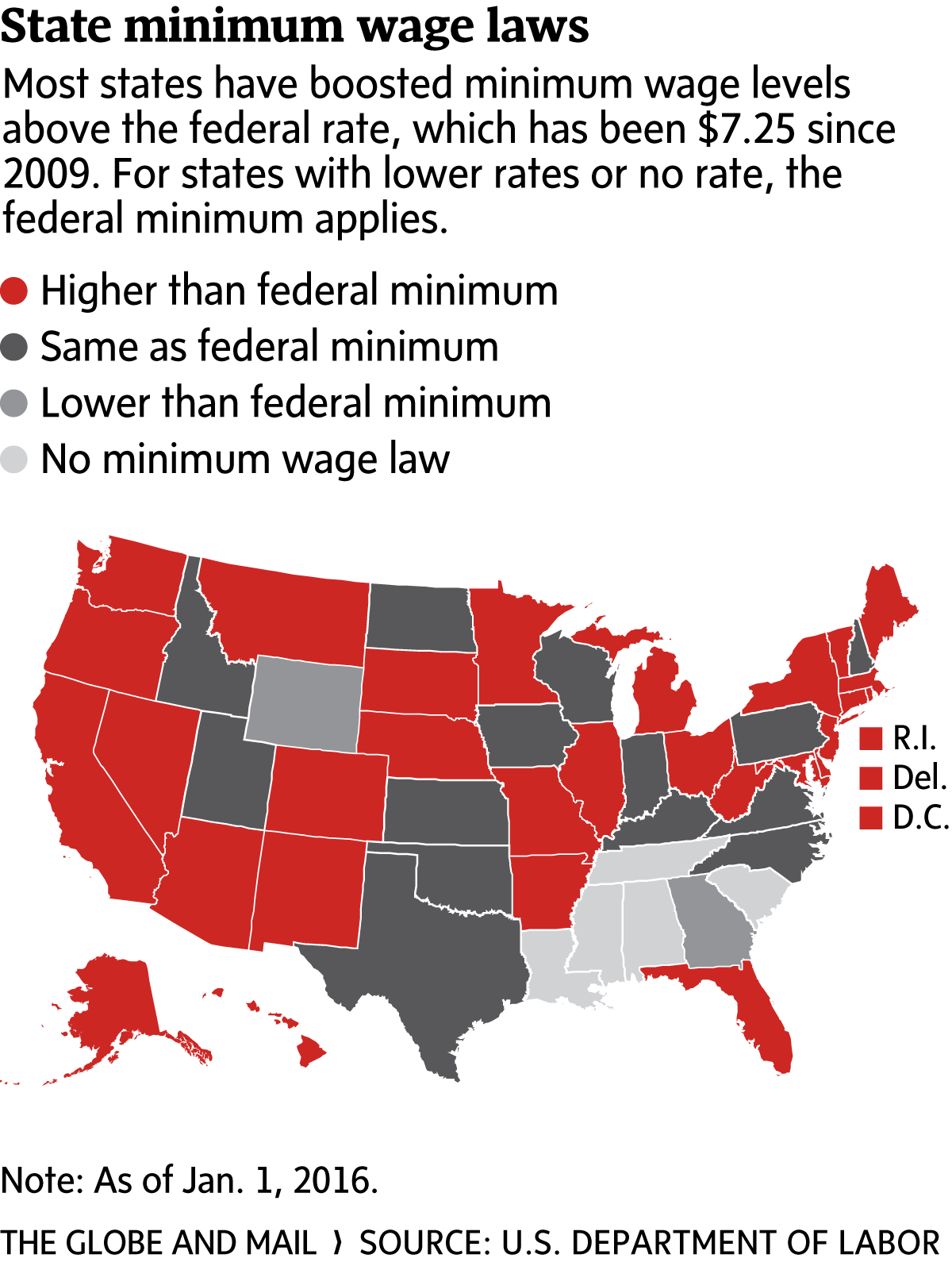All through the night, the workers at Nebraskaland Inc., a meat distributor in the Bronx, roam the alleys of a cavernous warehouse, piling boxes of beef and chicken onto pallets in subzero temperatures. Until last year, many were paid $10 (U.S.) an hour, a little above the minimum mandated by New York State.
Then Richard Romanoff, the company’s owner, saw a news segment about a movement started by fast-food workers to push the minimum wage to $15 an hour. “I’m going to speak straight with you, my managers wanted to get people as cheap as they could,” Mr. Romanoff said. But something about the idea “really clicked,” he said. Last summer, Nebraskaland began gradually increasing the lowest hourly wage at the company, which will hit $15 at the end of this year.

The moves by Nebraskaland are part of a rapid shift in the political and economic landscape regarding the conditions of the lowest-paid workers in the United States. Only four years ago, when fast-food workers first began holding marches to demand a $15-an-hour minimum wage, they were dismissed as impractical dreamers. Now, in a twist that has surprised economists and activists alike, that dream is becoming a reality in some parts of the country.
In the past week, two of the most populous states in the country – California and New York – enacted legislation to raise the minimum wage to $15 within six years. Major cities, such as Seattle, Los Angeles and San Francisco, have pledged to increase their minimum wage to $15 in steps. In Portland, Ore., the minimum hourly pay will rise to $14.75.

It’s not only cities and states: Last year, companies, such as Facebook Inc., Aetna Inc. and Amalgamated Bank, raised their lowest wages to $15 an hour or higher, while McDonald’s Corp. and Wal-Mart Stores Inc. have announced more modest increases. Some universities and smaller firms, influenced by the broader debate over the minimum wage, have also raised pay of their own volition.
“There is long overdue attention being paid to whether prosperity in the United States is fully shared,” said David Rolf, the president of a Seattle-based local of the Service Employees International Union, a national union that helped fund and lead the fights for higher minimum wages. “The ground is fertile precisely because workers have had enough.”
The U.S. national minimum wage is $7.25, which represents a 30-per-cent decline in real terms since its peak in the late 1960s. States and many cities can set their own wage floors as long as they are above the national level. Mr. Rolf said the recent advances in the minimum wage, which will benefit more than 10 million people, are perhaps the biggest victory for American labour in 60 years.
It’s also a dramatic experiment. In the past, economists have studied the impact of modest increases in the minimum wage. They found that such raises ameliorate the fortunes of low-paid workers and reduce staff turnover with little or no impact on overall employment. But economists say they can’t accurately predict the effects of an increase of this size.
“This is uncharted territory,” said Jacob Vigdor, a professor of public policy at the University of Washington who is leading a city-mandated study of the impact of Seattle’s minimum-wage increase. “It’s going to keep labour economists like myself busy for a very long time.”
In Seattle, where the minimum wage has already jumped to $13 from $9.47 just over a year ago, Prof. Vigdor’s team has detected an uptick in prices at restaurants, but not in other retail sectors, such as supermarkets and drugstores. And for the most part, he said, “the labour market still looks like it’s humming along here.”
Alan Krueger, an economist at Princeton University in New Jersey who conducted landmark research into the impact of increases in the minimum wage, recently wrote that, while “high-wage cities and states could probably absorb a $15-an-hour minimum wage with little or no job loss, it is far from clear that the same could be said for every state, city and town in the United States.”
California and New York have calibrated their policies to limit potential negative impacts. In a compromise, New York’s $15 minimum wage will apply only to New York City and its surrounding counties by 2021. In California, where the increase is statewide, legislators included provisions whereby the state can suspend the minimum wage increases if job growth or retail sales turn negative for a sustained period.
If there are costs as a result of the higher wages, the question is how they compare with the benefits, said Ben Zipperer, an expert on the minimum wage at the Washington Center for Equitable Growth. “Both [costs and benefits] may arise,” he said. “How people feel about the trade-off is more complicated.”
At Nebraskaland in the Bronx, Mr. Romanoff said roughly half of his 250 workers are benefiting from the wage increases, at a yearly cost to his company of about $350,000. “You pretend it’s an increase in rent, or electricity – you deal with it, one way or another,” he said.
Meanwhile, the number of applicants for job openings has quadrupled as news of the pay hikes spread.
Mr. Romanoff acknowledged that for some industries – including some of his customers, like supermarkets – such increases would be a challenge. “I just know for me, why wouldn’t I do it if I can afford it?”